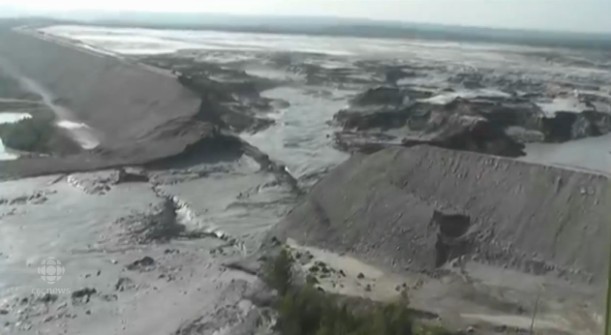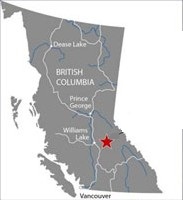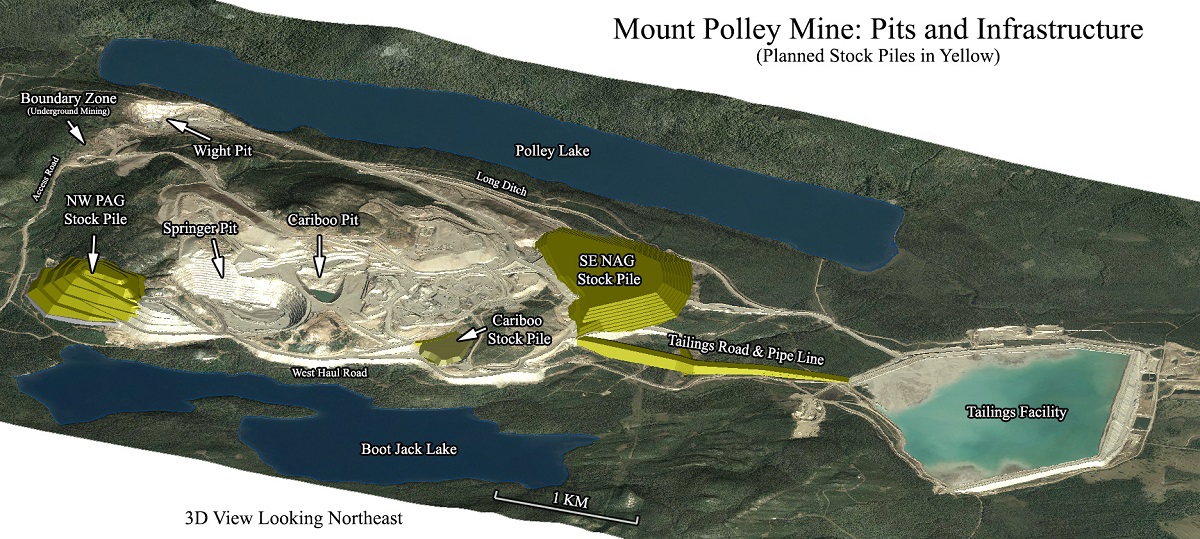At the site of one of British Columbia’s worst environmental disasters, the Cariboo Regional District has declared a state of local  emergency. In order to access additional capacity needed to protect property and infrastructure from the Mount Polley tailings pond breach, the district made the declaration Wednesday, expanding governmental provisions from the complete water ban that was issued Monday.
emergency. In order to access additional capacity needed to protect property and infrastructure from the Mount Polley tailings pond breach, the district made the declaration Wednesday, expanding governmental provisions from the complete water ban that was issued Monday.
“The potential long-term impact to waterways, the watershed and roads is huge,” said Chairman of the Cariboo Regional District Al Richmond.
The Mount Polley Mine tailings pond collapsed Monday near Williams Lake, central British Columbia. Millions of cubic meters of waste water and debris flooded into the Cariboo river system.
Read more: Water Ban Announced Near Williams Lake, Canada: Tailings Pond Breached
A complete water ban was announced Monday morning, and included all consumption and recreational use. The ban extended to the entire Quesnel and Cariboo river systems.
The waste spilled into Quesnel Lake, one of BCs largest clean lakes, and Polley Lake. Approximately 10 million cubic meters of water and 4.5 million cubic meters of debris were lost. Water continued to spill out of the pond Wednesday, although the pond was nearly empty.
Responders have been working around the clock to close the dam and secure debris areas, but due to the region’s locality and sparse population, quickly addressing a large environmental disaster such as the spill has proven a challenge.
 The Cariboo Regional District (CRD) declared a state of local emergency Wednesday. The district, working with the Royal Canadian Mounted Police (RCMP), Emergency Management BC, Central Cariboo Search and Rescue, Mount Polley, Interior Health and other associated agencies, is formulating a plan to deal with the disaster.
The Cariboo Regional District (CRD) declared a state of local emergency Wednesday. The district, working with the Royal Canadian Mounted Police (RCMP), Emergency Management BC, Central Cariboo Search and Rescue, Mount Polley, Interior Health and other associated agencies, is formulating a plan to deal with the disaster.
“The local state of emergency was declared to ensure the CRD has the power to take any remedial actions that may become necessary,” the CRD stated.
Immediate actions include bringing in barges to break up the debris before it hits the shore. There is concern that if the wind picks up, islands of debris dislodged by the massive water flow could be blown against the shore, damaging structures. There is also concern that the Quesnel Bridge–a wooden structure and the towns main access route–could be damaged by the debris.
There is also concern that the salmon run, which will begin soon, will be harmed. There have been reports and photos published of fish floating and being washed up on shore.
A chief concern is the quality of the water that left the tailings pond. The exact composition of the water is not currently known, although Polley Mine’s head official, Brian Kynoch, stated that the water was “very close to drinking water.” BC’s Environment Ministry is currently conducting an analysis. The results of the water tests will be known late Wednesday or Thursday.
Among the elements and chemicals expected to be found in large quantities are nickel, lead, copper and arsenic. Around 400,000 kilograms of arsenic were dumped into the pond in 2013, but Kynoch said that arsenic levels were one-fifth drinking water quality. There have also been reports that a large amount of phosphorous was in the water–the element found in fertilizers blamed for massive algae blooms making news in Ohio and other areas.
“I apologize for what happened,” stated Kynoch at a community meeting Tuesday. “If you had asked me two weeks ago if that could happen, I would have said it couldn’t happen, so I know that for our company it’s going to take a long time to earn the community’s trust back.”
A view of a creek affected by the breach
By Day Blakely Donaldson
